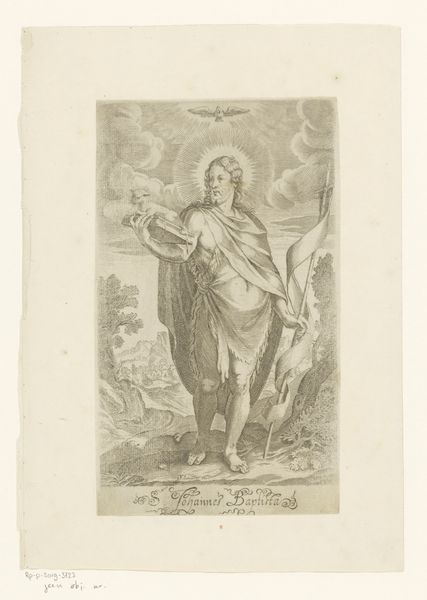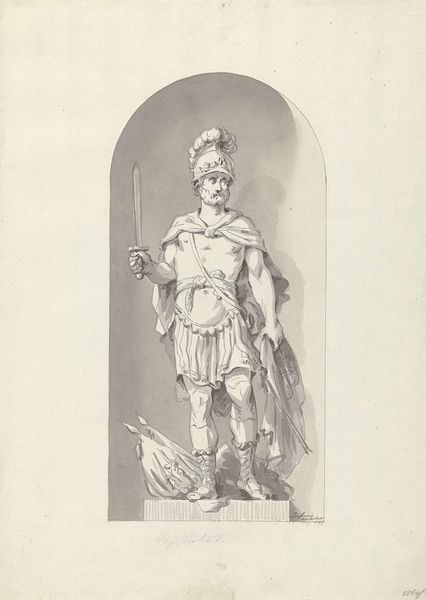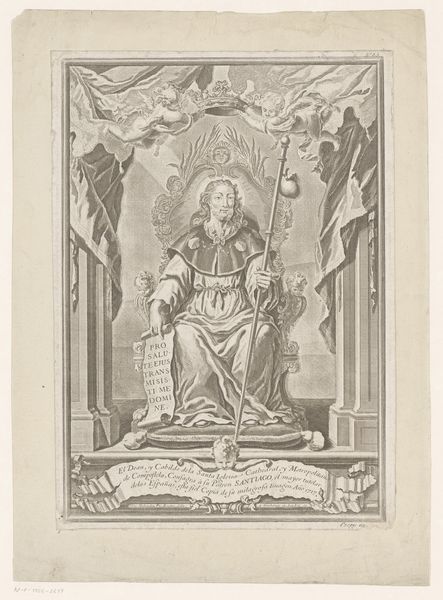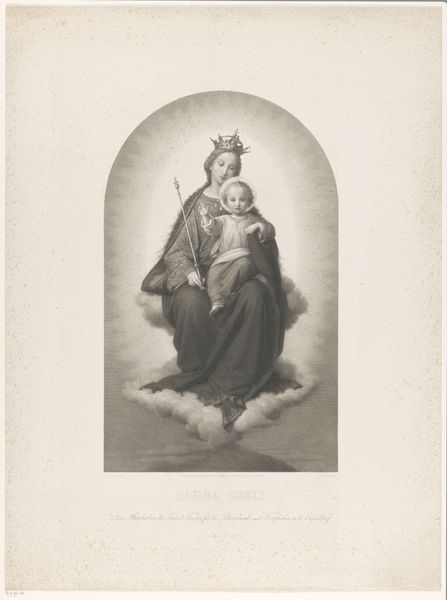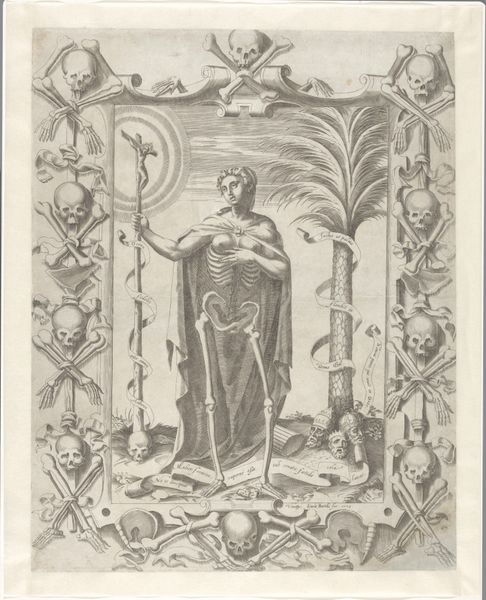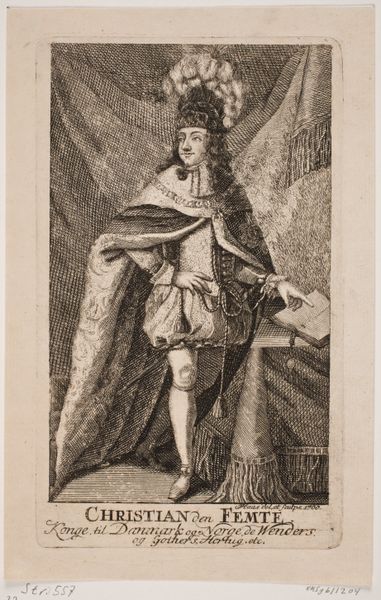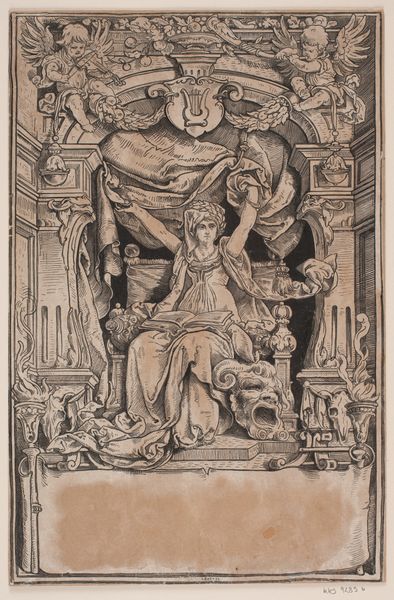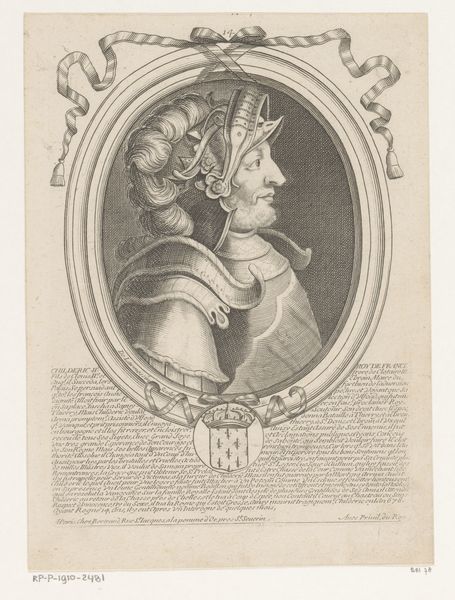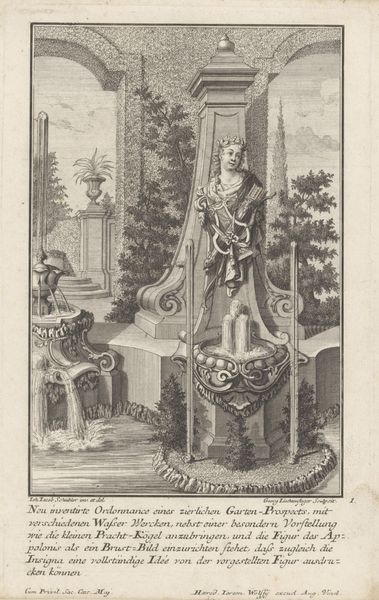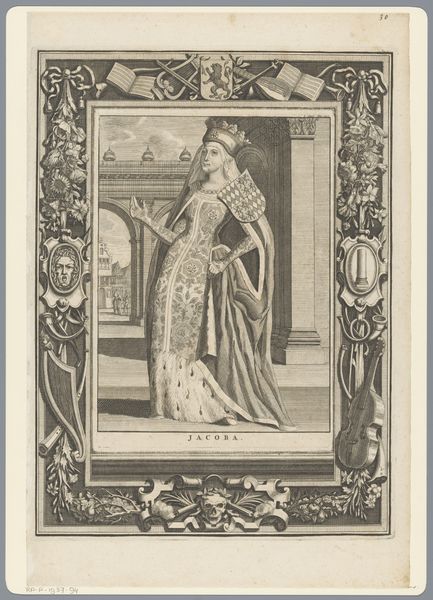
drawing, print, ink
#
portrait
#
drawing
#
ink drawing
# print
#
figuration
#
ink
#
history-painting
Dimensions: 7 3/16 x 5 1/2 in. (18.3 x 14 cm)
Copyright: Public Domain
Editor: We're looking at "A Costumed Actor in Front of a Curtain," an ink drawing by Gustave Dore, created sometime between 1832 and 1863. The detail achieved with ink is incredible. The figure in the center exudes a certain drama, almost theatrical, emphasized by the sweeping curtain backdrop and, uh, what seems to be discarded wigs at his feet. What compositional elements stand out to you in this work? Curator: Certainly. Notice how the composition is structured. Dore's use of line, specifically varied thicknesses, is crucial. Observe how the figure is rendered with relatively firm, decisive marks, establishing the character’s presence. This contrasts with the softer, almost radiating lines that form the curtain behind him. These diverging lines create a visual energy which then intersects the verticality of the actor, effectively capturing both the individual and the artificial drama of theatre. Note also how these opposing visual trajectories enhance a spatial ambiguity to the whole, leaving its final meaning unresolved. How does this use of varied line work affect your perception of depth and space within the composition? Editor: It's true, the lines behind him make the space ambiguous and pull my eyes away from the wigs at the base. I am not sure if they should be viewed as part of the art? What’s so arresting is the dynamic tension between the sharp definition of the figure and the soft sketchiness of the surroundings. This interplay creates a unique spatial relationship, compressing the depth and bringing the background forward, thus creating an unsettling composition. Curator: An unsettling, indeed visually ambiguous and dynamic space which ultimately, asks us what lies at the foundation of the subject-object dichotomy so often associated with academic formalism. I think that is fascinating to think about further. Editor: Thank you.
Comments
No comments
Be the first to comment and join the conversation on the ultimate creative platform.


